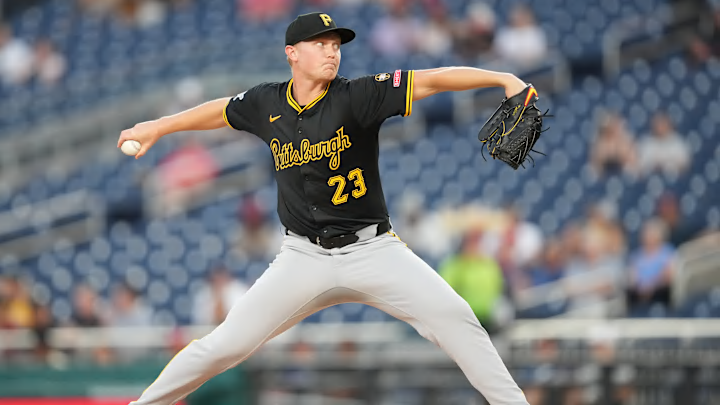As a team whose season was over long before the last out of the regular season, the Pittsburgh Pirates have had a lot of time to formulate their plan of attack for the offseason. With that, should come a healthy dose of reflection on the moves that didn't work in 2025.
At the forefront of that soul searching should be careful consideration of what exactly went wrong in what was a thoroughly underwhelming trade deadline. The Pirates already got a glimpse at what the return for David Bednar will look like, with the gem of that trade, Rafael Flores, getting a late-September cup of coffee.
When it comes to Pittsburgh's trade deadline, though, it will be the moves they didn't make that haunt their future rather than the ones they did pull the trigger on.
Not moving Mitch Keller and Dennis Santana when their values were at their highest will come back to bite the Pirates
One of the biggest mistakes a general manager of a rebuilding team can make is holding on to a veteran asset too long. When it comes to players with team control beyond the current season, the pitfall is asking for the moon with the belief that if no one meets your price, you can simply make a go at it again at a later date.
That assumes a player's value is static. Nothing could be further from the truth. Not only is there the risk of injury, but there's also a hit the value takes through less team control if moved later on, as well as the risk of a downturn in performance.
As we move into the offseason, there's another factor at play. At the trade deadline, you have a captive audience, whereas in the offseason, you're not only selling your wares against other rebuilding teams on the trade market, you're competing against free agents as well.
Take Mitch Keller, for example. At the deadline, the list of contenders interested in his services was a mile long. Now, though, the Pirates will be selling him against starters that those teams could simply pay for on the free agent market without surrendering prospect capital. Without the backdrop of the playoff chase, they've lost the air of desperation that could have motivated an overpay.
To make matters worse in Keller's case, he laid an egg in the second half. He was attractive when he owned a 3.48 ERA. A second-half mark of 5.65, well, not so much. Given the various reports of nearly a half-dozen teams interested in him back in July, it seems that money, not prospects, was the hang-up. Now, Pittsburgh risks getting stuck with his contract. If they're lucky enough to find a team interested, the return will be lighter as he's lost a lot of his luster.
Dennis Santana is another prime example. The journeyman reliever had a career year. His 2.18 ERA was sterling, and nearly two runs lower than his career mark of 4.13. It's not inconceivable that the 29-year-old had a late-career breakout, but given the volatility of relievers, it's more likely he never comes close to 2025's heights again.
Santana made $1.4 million last season but will only get more expensive as he moves through arbitration. Spotrac predicts a $4.5 million salary for him in 2026, more than three times last year's rate.
The Pirates needed to capitalize on value to get young assets, preferably hitters, and by being stingy with the money they sent out with Keller and overly choosy with the way they handled Santana's market, they not only came up empty in 2025, but may never have another opportunity to turn these two superfluous pieces into long-term foundational prospects. Whiffing like this at the deadline truly is organizational malpractice.
